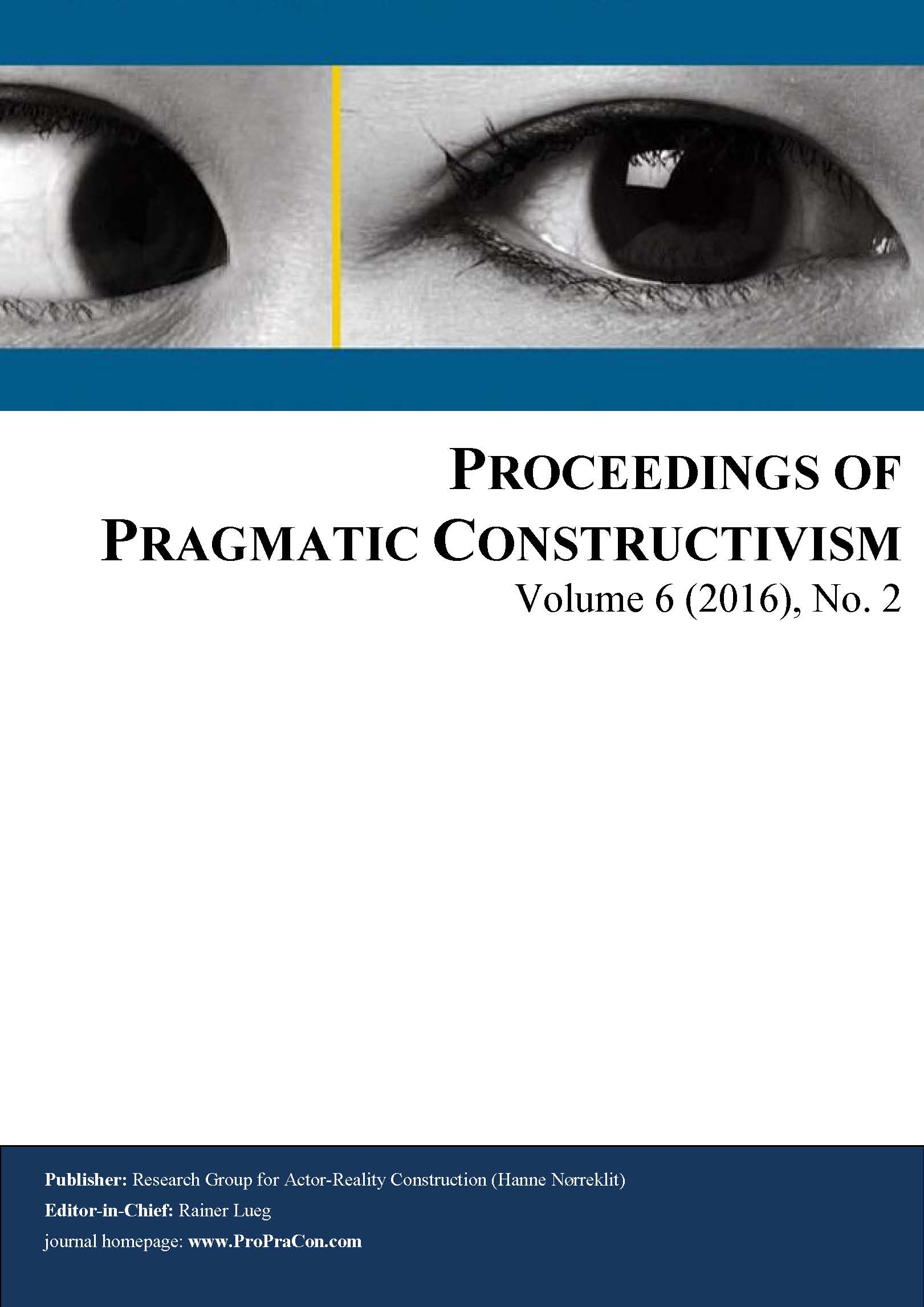Change, concepts and the conceptualising method
DOI:
https://doi.org/10.7146/propracon.v6i2.25112Keywords:
Pragmatic constructivism, concepts as properties, concept formationAbstract
When looking for theories and methods in social science able to describe and understand changes, pragmaticconstructivism offers some possibilities in doing exactly that. Research on pragmatic constructivism requires dialogues
with actors in the field and an emphasis on language and language development. Concepts and concept development
therefore plays a very central role in any researchers effort to describe and understand changes in language games and
life worlds. In this essay I will take a closer look the concept of concepts and at concept formation. Through an analysis
of Nørreklit’s (1973) ideas of concepts as properties and Gadamer’s (1962) ideas of concept formation, it is concluded
that concept development are present in everyday life as well as a research method. The difference between the two is
the accidental processes of everyday life, while research methods require a conscious application of concept
development.
References
Arendt, Hannah, 1958. The Human Condition. The University of Chicago Press; 2nd edition (1998).
Christensen, Jens, Ed. 2004. Vidensgrundlag for handling (Knowledge base for action). Aalborg University Press.
Aalborg.
Gadamer, Hans Georg. 1962 (1992). Truth and Method. Crossroads.
Heidegger, Martin. 1927 (1995). Being and Time. Basil Blackwell.
Heidegger, Martin. 1996 (1957). The principle of reason. Indiana University Press.
Henriksen, et al. 2004. Dimensions of Change. Copenhagen Business School Press.
Nørreklit, Hanne; Morten Raffnsøe-Møller; Mitchell, Falconer. 2016a. A pragmatic constructivist approach to
accounting practice and research. Qualitative Research in accounting and Management. Vol. 13. No. 3.
Nørreklit, Hanne; Nørreklit, Lennart; Mitchell, Falconer. 2016b. Understanding practice generalisation – opening
the research/practice gap. Qualitative Research in accounting and Management. Vol. 13. No. 3.
Nørreklit, Lennart. 1973. Concepts: their nature and significance for metaphysics and epistemology. Odense
University studies in philosophy. vol. 2.
Nørreklit, Lennart. 1978. Problem orienteret forskningspraksis og den reale virkeligheds constitution. (Problem
oriented research practice and the constitution of the real reality). Aalborg University Press. Aalborg.
Nørreklit, Lennart. 2004. Hvad er virkelighed? (What is reality?) In Christensen, Jens (Ed) Vidensgrundlag for
handling (Knowledge base for action). Aalborg University Press. Aalborg.
Nørreklit, Lennart. 2009. Konstruktion af sandhed (Construction of Truth). In Rasmussen & Aarup Jensen: Læring
og forandring (Learning and Change). Aalborg University Press.
Nørreklit, Lennart. 2009. Konstruktion af sandhed – sandhed som integration og læring (Construction of truth –
truth as integration and learning). In Rasmussen & Aarup Jensen: Læring og forandring – Tværfaglige
perspektiver. (Learning and Change – cross disciplinary perspectives. Aalborg. Aalborg University Press.
Nørreklit, Lennart. 2013. Reality as a construct: outline of a pragmatic constructivist perspective. Proceedings of
Pragmatic Constructivism. Vol 3, No 2.
Downloads
Published
How to Cite
Issue
Section
License
Previous and future use of the work
ProPraCon assumes the non-exclusive rights to publish and store the work of its authors, once they have consented to a publication. Since the rights to publish are non-exclusive, authors are free to re-use their work, e.g., to publish it in other media (as ProPraCon aims at publishing proceedings). Hence, it is explicitly allowed that works submitted to ProPraCon may be published in a somehow similar form in other media. Yet, submitting authors warrant that the work is not an infringement of any existing copyright and will indemnify the publisher against any breach of such warranty.
Permissions
By submitting work to ProPraCon, the authors declare that they have permission to use any content that has not been created by them. Specifically, when using tables, figures or excerpts of more than 400 words, it is expected that the authors…
- …obtain written permission of copyright for the use in print and electronic formats of any of their text, illustrations, graphics, or other material, in their work. This includes any minor adaptations.
- …acknowledge the original source in captions and in the reference list.





